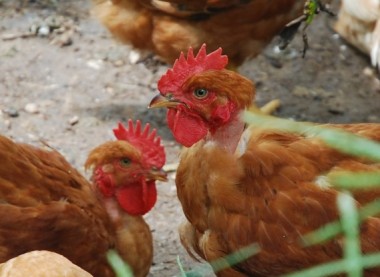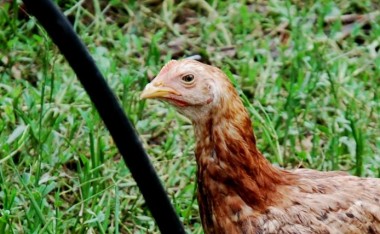Mar 09, 2012
Round Eyes, 'Long' Eyes
If you have a few thousand chickens running around, how do you know if some disease is starting?
In antibiotic-free poultry raising, it is extremely important that we catch problems fast. By the time the chicken shows obvious signs, the disease is well advanced and mortality can be high.
One of the fastest way we know of, especially if we are relying on workers, is to go like this first thing in the morning:
Farmer: How’s the chickens in Field Number 10?
Worker: OK, they are eating and running around.
Farmer: Are the eyes round?
Round Eyes
Worker: Most have round eyes. Some have 'long' eyes.
'Long' Eyes
Farmer: Out of 10 chickens, how many round, how many long?
Worker: 8 round, 2 long.
Round Eyes, 'Long' Eyes
20% of your chickens are showing signs of problems. You best head over to the field fast to see what’s the problem. First make sure the ‘long’ eyes is not due to physical eye problems.
Then, sacrifice a few chickens and examine the internal organs. Once you have narrowed down the possible causes, take the necessary action.
11:06 Posted in Chickens, Nature Farming, Sustainable Farming | Permalink | Comments (0) | Tags: free-range poultry, organic chicken farming, necropsy, poultry disease identification, chicken diseases
Oct 08, 2011
Raising Free Range Chickens - Necropsy & Disease Identification
Being able to perform necropsy of dead chickens and to identify diseases is crucial for the success of a chicken farm.
Delays in disease identification can lead to outbreaks resulting in high mortality and economic losses.
It is absolutely necessary for detail records to be kept from Day 0 until all the chickens are sold, for each batch. Detail records will enable us to analyse out trends and history, which together with the lesions in organs will help identify the many causes of poor weight gain, mortality, etc.
For example, trend analysis enabled us to identify a non-gumboro spiking mortality phenomenon in young chicks below two weeks old, which we ultimately traced to mosquitoes.
Dirgha Bahadur Tamang, from Nepal, has reached competency in necropsy and disease identification.
Dirgha receiving his certificates from Razaly, the farm director
We provide him with a 3 inch thick file of laminated pictures of the key clinical signs of various common chicken diseases. He uses the pictures as a reference and when he sees the start of infectious disease in culled chickens, he will raise the alarm for quick pre-emptive action.
Dirgha with his certificates and his file on common poultry diseases
We hope to be able to sponsor him for further studies to be a vet some time in the future.

Dirgha performing a necropsy on a young chick.












